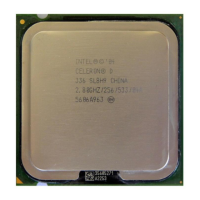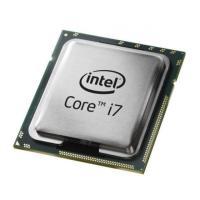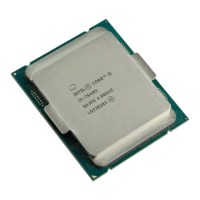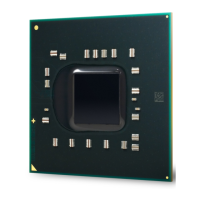Intel
®
Celeron
®
D Processor in the 775-Land LGA Package Thermal Design Guide17
Order #303730
Processor Thermal/Mechanical Information
the amount of system airflow can be traded off against each other to meet specific system design
constraints. Additional constraints are board layout, spacing, component placement, acoustic
requirements and structural considerations that limit the thermal solution size. For more
information, refer to the Performance ATX Desktop System Thermal Design Suggestions or
Performance microATX Desktop System Thermal Design Suggestions documents available on the
http://www.formfactors.org/ web site. For more information on 1U and 2U server refer to the Thin
Electronics Bay Specifications at http://www.ssiforum.org.
In addition to passive heatsinks, fan heatsinks and system fans, other solutions exist for cooling
integrated circuit devices. For example, ducted blowers, heat pipes and liquid cooling are all
capable of dissipating additional heat. Due to their varying attributes, each of these solutions may
be appropriate for a particular system implementation.
To develop a reliable, cost-effective thermal solution, thermal characterization and simulation
should be carried out at the entire system level, accounting for the thermal requirements of each
component. In addition, acoustic noise constraints may limit the size, number, placement, and types
of fans that can be used in a particular design.
To ease the burden on thermal solutions, the Thermal Monitor feature and associated logic have
been integrated into the silicon of the Celeron D Processor in the 775-land LGA package. By
taking advantage of the Thermal Monitor feature, system designers may reduce thermal solution
cost by designing to TDP instead of maximum power. Thermal Monitor attempts to protect the
processor in rare excursions of workload above TDP. Implementation options and
recommendations are described in Section 4.0, “Thermal Management Logic and Thermal
Monitor” on page 23 and Section 4.2.2, “Thermal Control Circuit” on page 24.

